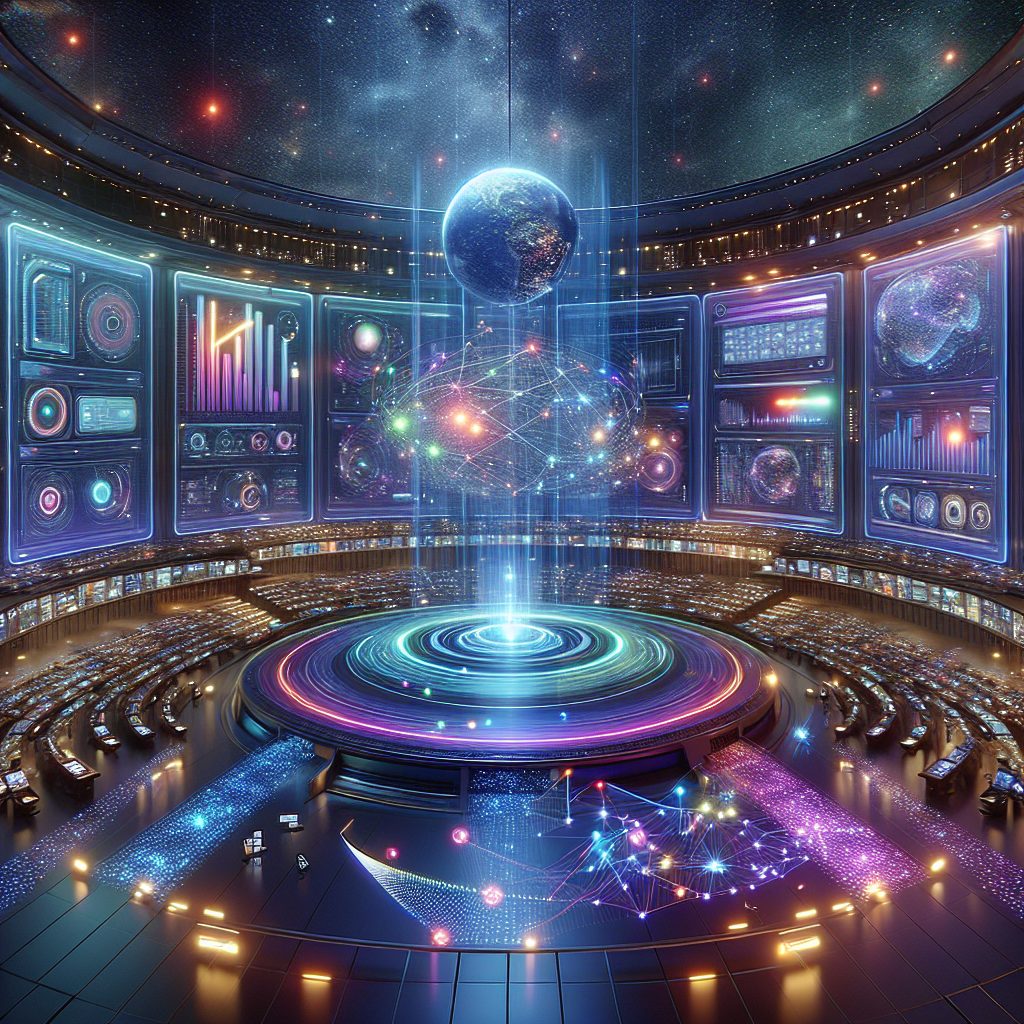Enhancing Multimodal Agent Systems for Tomorrow

In a world where technology evolves at breakneck speed, understanding how to enhance multimodal agent systems is essential. These sophisticated systems integrate various data types, improving responsiveness and adaptability in AI applications. As advancements from institutions like OpenAI, MIT Media Lab, and Silicon Valley innovators accelerate, the future of intelligent systems promises seamless interaction across multiple modalities.
Introduction
The development of multimodal agent systems is revolutionizing our interactions with technology. By integrating diverse data types—such as text, audio, visual cues, and more—these systems process information in a way that mimics human-like understanding. This capability allows for richer interactions and more intuitive responses, paving the way for smarter applications across numerous industries.
In this blog post, we’ll explore:
- The importance of multimodal agent systems
- Current advancements spearheaded by leading institutions
- Strategies to enhance integration and interaction within these systems
- Future technology trends in AI
Understanding Multimodal Agent Systems
Multimodal agent systems are designed to process and respond to various forms of input simultaneously. Unlike traditional systems that might rely on a single data type (e.g., text or voice), multimodal agents can interpret gestures, facial expressions, spoken words, and written language in unison.
The Role of AI Advancements
AI advancements have been pivotal in the evolution of these systems. Technologies developed by OpenAI, MIT Media Lab, and other Silicon Valley pioneers are at the forefront of this progress. These organizations focus on improving algorithms that allow machines to understand context and nuance across different data types, resulting in more responsive and adaptable agents.
Key Features of Multimodal Systems
- Data Integration: The ability to synthesize information from various sources into a cohesive understanding.
- Contextual Awareness: Understanding the context behind each input type for more accurate responses.
- Interactivity: Providing seamless interactions across different modalities, enhancing user experience.
Current Trends and Developments
Improving Integration of Data Types
A major trend is the enhancement of integration techniques to make multimodal systems more efficient. By improving how these systems handle diverse data inputs, developers are making agents that can respond with greater accuracy and speed. Institutions like MIT Media Lab have been instrumental in researching methods for better data synthesis.
For instance, a project at MIT Media Lab involved creating algorithms that could process visual and auditory signals together to improve real-time translation services. By integrating these modalities, the system achieved higher accuracy compared to traditional text-based translation tools.
Strategies for Seamless Interaction Between Modalities
Developing strategies for seamless interaction between different modalities is crucial for the advancement of intelligent systems. These strategies ensure that multimodal agent systems operate smoothly, regardless of the type or combination of inputs they receive. This involves optimizing machine learning models so that they can interpret and prioritize input from various sources without conflict.
For example, OpenAI has been working on enhancing how agents handle simultaneous text and voice commands in smart home devices. By refining these interactions, users experience more fluid control over their environments through natural language processing combined with gesture recognition.
Applications Across Industries
The potential applications of multimodal agent systems are vast and varied:
Healthcare
In healthcare, multimodal systems can assist in diagnostics by integrating patient history (text data), voice notes from physicians, and visual data from medical imaging. This comprehensive approach allows for more accurate diagnoses and personalized treatment plans.
For example, AI tools like those developed by OpenAI can help radiologists analyze X-rays with greater precision when combined with other diagnostic data, reducing the margin of error in detecting anomalies.
Education
In education, these systems can transform learning experiences by adapting to various student needs. Multimodal agents can process text-based assignments, spoken explanations from students, and visual learning aids like videos or diagrams, providing customized feedback that caters to individual learning styles.
MIT Media Lab has been exploring how augmented reality (AR) can be used in conjunction with multimodal systems to create immersive educational environments where students interact with complex scientific concepts more intuitively.
Customer Service
In customer service, integrating voice recognition, text chatbots, and visual data such as product images allows companies to offer comprehensive support. This integration enables agents to provide quicker and more precise solutions by understanding a customer’s issue from multiple angles.
Companies like those in Silicon Valley are developing platforms where AI can interpret and respond to both verbal inquiries and written feedback simultaneously, ensuring no information is overlooked.
Future Technology Trends in AI
As we look to the future, several technology trends are set to shape the landscape of multimodal agent systems:
- Increased Personalization: Systems will become more adept at tailoring responses and interactions to individual users. By leveraging data from various sources, agents can learn user preferences over time, offering highly personalized experiences.
- Integration with Emerging Technologies: The fusion with technologies like AR and VR will create immersive experiences and new interaction paradigms. Multimodal systems integrated with AR/VR can enhance fields such as gaming, training simulations, and virtual meetings by providing a more engaging experience.
- Enhanced Accessibility: Multimodal agents will offer greater accessibility for users with disabilities, thanks to advanced recognition capabilities that cater to different needs. For instance, voice-controlled interfaces combined with visual aids can assist individuals who are visually impaired in navigating digital platforms more effectively.
Challenges and Considerations
While the potential of multimodal agent systems is immense, there are challenges and ethical considerations:
Data Privacy
As these systems integrate various data types, ensuring user privacy becomes paramount. Developers must implement robust security measures to protect sensitive information from breaches.
Ethical AI Use
The development and deployment of multimodal agents require careful consideration of their impact on employment and society at large. It is crucial to design these systems in ways that augment human capabilities rather than replace them entirely.
Conclusion
Multimodal agent systems represent a significant leap forward in the field of artificial intelligence, offering enhanced interactivity and responsiveness across diverse applications. By harnessing the power of integrated data types, these systems are set to redefine our interactions with technology in numerous domains.
As institutions like OpenAI, MIT Media Lab, and Silicon Valley innovators continue to push boundaries, we can expect even more sophisticated advancements in this field. Looking ahead, the integration of emerging technologies such as AR/VR will further expand the capabilities and applications of multimodal agents, driving us towards a future where AI is seamlessly woven into our daily lives.
Take Action
For businesses and developers interested in exploring multimodal agent systems, now is an opportune time to invest in this technology. Consider partnering with leading institutions or innovators in the field to stay ahead of the curve. By doing so, you can leverage these advanced systems to transform your operations, enhance customer experiences, and create new opportunities for growth.
Ready to take the next step? Explore how multimodal agent systems can revolutionize your industry today!
